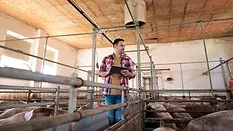
Chemical
Chemical testing and analysis examine the artificial or undesired chemicals that may make their way into food and water, including those from agricultural practices, food processing, or packaging.
Articles
More ArticlesNever miss the latest news and trends driving the food safety industry
eNewsletter | Website | eMagazine
JOIN TODAY!Copyright ©2025. All Rights Reserved BNP Media.
Design, CMS, Hosting & Web Development :: ePublishing


